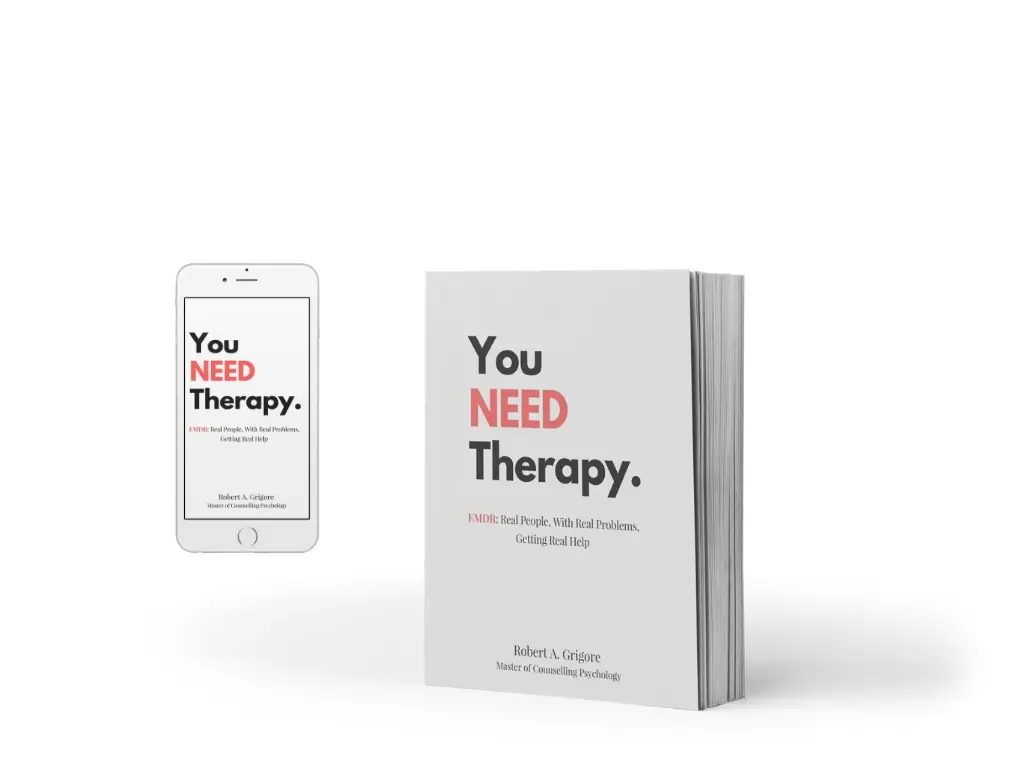Eye Movement Desensitization and Reprocessing (EMDR) has become an increasingly popular therapeutic approach for treating trauma, anxiety, depression, and other mental health issues. One of the key questions is what is the success rate of EMDR?
As many aspects influence this, we’ll comment some data, factors that affect the outcome, and how EMDR compares to other forms of therapy. Of course, we’ll give you our perspective as we practice daily EMDR therapy in Surrey.
The basics first: what is EMDR?
Before discussing the actual success rate of EMDR, it’s essential to understand what EMDR therapy is.
EMDR is an evidence-based psychotherapy approach designed to help individuals process and recover from traumatic experiences. Developed by Francine Shapiro in 1987, EMDR therapy uses bilateral stimulation—most commonly eye movements, though tapping and auditory tones can also be used—to help reprocess distressing memories. Unlike traditional talk therapy, EMDR doesn’t require extensive verbal exploration of traumatic events but rather focuses on the brain’s ability to heal itself.
The therapy works through an eight-phase process, which includes history-taking, preparation, assessment, desensitization, installation, body scan, closure, and reevaluation. Each phase is structured to help the client work through traumatic memories, ultimately allowing for emotional relief and cognitive shifts.
What is the success rate of EMDR:
The success rate of EMDR therapy has been widely studied and documented. According to studies, EMDR has shown a success rate of up to 77-90% for treating post-traumatic stress disorder (PTSD). This is significantly higher than many other therapeutic approaches, including cognitive behavioral therapy (CBT) and traditional talk therapy. EMDR has also been effective for treating a wide range of conditions beyond PTSD, such as anxiety, depression, phobias, and panic disorders.
For example, a study found that 100% of single-trauma victims and 77% of multiple-trauma victims no longer met the diagnostic criteria for PTSD after just six sessions of EMDR therapy. This shows that the success rate of EMDR can be incredibly high, particularly for individuals dealing with trauma.
What factors affect the success rate of EMDR?
While the success rate of EMDR is generally high, it’s important to also recognize that several factors can influence the outcome of therapy.
These factors can affect how quickly a client responds to EMDR treatment and how many sessions they may need.
1. Severity complexity of trauma
The severity and complexity of a client’s trauma can significantly impact the success rate of EMDR. Those with single-incident traumas, such as car accidents or assaults, tend to respond more quickly to EMDR than those with complex trauma, such as long-term abuse or neglect.
While individuals with complex trauma may still benefit from EMDR, they often require more sessions to achieve the same results.
2. Number of sessions
The number of EMDR sessions required varies from person to person. This is important, as at our EMDR therapy clinic we really want to set realistic expectations.
In our experience, some clients report significant improvements after as few as 5-6 sessions, while others may need 20-30 hours of therapy to see significant changes.
For clients with more severe or complex trauma, the therapy may take 40-50 hours to complete. This wide variation is normal, and it’s essential for clients to understand that their progress may follow a bell curve, with most people falling somewhere in the middle range of session requirements.
At Grigore Counselling in Surrey, most clients typically require between 3-6 months of weekly 1-2 hour sessions to see significant changes in their lives. However, there are options for accelerated treatment. EMDR intensives (which we call Total Immersion EMDR)—where sessions are longer (2-6 hours) and / or more frequent (up to 4 times per week)—can drastically reduce the number of sessions needed. Over 70 clients (at the time of this article) have completed their EMDR journey in under a week with this approach.
3. Client’s readiness and willingness to engage
A client’s readiness to confront their trauma and actively engage in the therapy process also influences the success rate of EMDR. Individuals who are open and willing to engage in the therapy tend to have better outcomes. It’s important for the client to feel safe and supported during therapy, as this will allow them to fully engage with the process and work through their trauma.
4. Therapist expertise
The therapist’s experience and training in EMDR can also impact the success rate. A certified and well-trained EMDR therapist is more likely to help a client achieve successful outcomes. That’s why at Grigore Counselling all therapists are certified and have extensive experience working with a wide range of clients using EMDR.
How does EMDR compare to other therapies?
When considering the success rate of EMDR, it’s helpful to compare it to other therapeutic modalities. Cognitive Behavioral Therapy (CBT) is often cited as one of the most effective treatments for PTSD, but EMDR has been shown to be more effective in certain cases. Studies have demonstrated that EMDR often achieves faster results, with fewer sessions needed compared to CBT; and unlike CBT, EMDR requires no homework on behalf of the client (contributing to a higher completion rate, and therefore higher success rate compared to CBT).
For example, one study found that 67% of individuals treated with EMDR no longer had PTSD after only three sessions, compared to 29% in the CBT group. Additionally, a review of 26 randomized controlled trials found that EMDR was superior to other trauma-focused therapies in reducing symptoms of PTSD and anxiety. This makes EMDR an attractive option for those seeking faster, more effective treatment for trauma.
Success stories: real-world outcomes of EMDR
The success rate of EMDR is more than just statistics; it’s also reflected in the real-world experiences of clients. Many individuals report life-changing results after completing EMDR therapy. One of the most common reports is a significant reduction in anxiety, improved emotional regulation, and a sense of relief from intrusive thoughts or flashbacks related to traumatic experiences.
At Grigore Counselling, many clients share that they experienced breakthroughs after years of feeling stuck in traditional therapy. Unlike other forms of therapy, which can take years to show noticeable improvements, clients in EMDR therapy often report feeling better after just a few months. You can read more of our reviews here.
So is EMDR for me?
As you see, the success rate of EMDR is impressive, with studies showing that up to 90% of clients experience relief from PTSD and other mental health conditions after completing EMDR therapy.
For that, if you’re looking for a long-term treatment plan or a faster route to healing, EMDR can provide life-changing results. But the first step will always be reaching out to your therapist. You may start your EMDR journey with us by booking an appointment.











